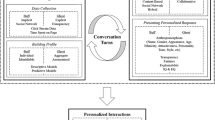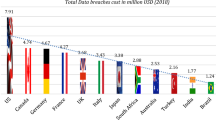Abstract
The problem of Database Query has always been considered from the user’s side. That is, the databases are always treated merely as the object of search, rather than being a subject or willing participants of an information exchange. This paradigm works when all participating databases belong to a single authority (such as a company) under which their participation is definitive and their contents completely open for the querying. Traditional single databases, federated databases, and even the new XML-based Internet databases subscribe to this user-oriented paradigm. However, emerging information enterprises are increasingly collaborative in nature, since they tend to involve, on a real-time and on-demand basis, a large number of databases belonging to many different organizations whose participation is conditional and case-by-case; e.g., drilling through supply chains. These collaborative queries deserve a new paradigm that equally account for the provider side. Research has shown that market-style self-allocation of users to providers is a promising approach to support such a paradigm. However, previous results of artificial markets are insufficient for global database query. Therefore, we develop an artificial market model to provide a Two-Stage Collaboration solution, where the first stage establishes optimal participation of databases for a search task, and the second executes the task in a traditional database query manner. The proposed model employs a new agent-based, peer-to-peer publish and subscribe approach to self-allocating database resources in an information enterprise. This approach promises to lead eventually to allocating other classes of information resources, as well. New results include (1) an agent model using a Metadatabase and an Agent-Base to create and manage large number of custom agents, (2) a peer-to-peer negotiation method, and (3) an open common schema design. The paper also provides an implementation scheme for developing the artificial market. Laboratory tests show that such a mechanism is feasible for large scale matching and negotiation as required by the first stage. The second stage employs mainly previous results established in the field.
Similar content being viewed by others
References
G. Babin and C. Hsu, Decomposition of knowledge for concurrent processing, IEEE Transactions on Knowledge and Data Engineering 8(5) (1996) 758–772.
A. Baker, Metaphor or reality: A Case Study Where Agents Bid with Actual Costs to Schedule a Factory, in: S. Clearwater (Ed.), Market-Based Control: a Paradigm for Distributed Resources Allocations, World Scientific Publishing, River Edge NJ (1996).
A. Baker, A Survey of Factory Control Algorithms That Can Be Implemented in a Multi-Agent Hierarchy: Dispatching, Scheduling, and Pull, Journal of Manufacturing Systems 17(4) (1998) 297–320.
V. Boonjing and C. Hsu, Natural Language Interaction Using a Scalable Reference Dictionary, Proceedings of the 8th International Conference on Applications of Natural Language to Information Systems Burg, Germany (2003).
M. Bouziane and C. Hsu, A Rulebase Management System Using Conceptual Modeling, Journal of Artificial Intelligence Tools 6(1) (1997) 37–61.
R. Braumandl, M. Keidl, A. Kemper, D. Kossmann, A. Kreutz, S. Seltzsam and K. Stocker, ObjectGlobe: Ubiquitous Query Processing on the Internet, The VLDB Journal 10 (2001) 48–71.
A. Cesta, A. Oddi and S.F. Smith, Iterative flattening: A Scalable Method for Solving Multi-Capacity Scheduling Problems, Proceedings National Conference on Artificial Intelligence (AAAI-00), Austin, TX, (2000).
W. Cheung and C. Hsu, The Model-Assisted Global Query System for Multiple databases in Distributed Enterprises, ACM Transactions on Information Systems 14(4) (1996) 421–470.
S.H. Clearwater (ed.), Market-Based Control: A Paradigm for Distributed Resource Allocation, (World Scientific Publishing, River Edge, N.J., 1996).
R. Conway, W. Maxwell and W. Miller, Theory of Scheduling (Addison-Wesley, Reading, MA, 1967).
D. Coppersmith and P. Raghavan, Multidimensional On-line Bin Packing: Algorithms and Worst-Case Analysis, Operations Research Letters 8 (1989).
R. Glushko, J. Tenenbaum and B. Meltzer, An XML Framework for Agent-based E-commerce, Communications of the ACM 42(3) (1999) 106–114.
S. Heragu, R. Graves, B. Kim and A. Onge, Intelligent Agent Based Framework for Manufacturing Systems Control, IEEE Transactions on Systems, Man, and Cybernetics, forthcoming in (2003).
D.S. Hochbaum and D.B. Shmoys, Using Dual Approixmation Algorithms for Scheduling Problems: Theoretical and Practical Results, Journal of the ACM 34(1) (1987).
C. Hsu, Enterprise Integration and Modeling: The Metadatabase Approach (Kluwer Academic Publishers, Boston, 1996).
C. Hsu, M. Bouziane, L. Rattner and L. Yee, Information Resources Management in Heterogeneous Distributed Environments: A Metadatabase Approach, IEEE Transactions on Software Engineering 17(6) (1991) 604–625.
C. Hsu and S. Pant, Planning for Electronic Commerce and Enterprises: A Reference Model (Kluwer Academic Publishers, Boston, 2000).
C. Hsu and C. Carothers, A Self-Scheduling Model Using Agent-Base, Peer-to-Peer Negotiation, and Open Common Schema, Proceedings International Conference on Production Research Blacksburg, VA (2003).
M. Nandula and S.P. Dutta, Performance Evaluation of an Auction-Based Manufacturing System Using Colored Petri Nets, International Journal of Production Research 38(38) (2000) 2155–2171.
H. Parunak, Agents in overalls: Experiences and Issues in the Development and Deployment of Industrial Agent-Based Systems, ERIM CEC Report, P.O. Box 134001, Ann Arbor, MI 48113-4001 (2001).
V. Prabhu, Performance of Real-Time Distributed Arrival Time Control in Heterogeneous Manufacturing Systems, IIE Transactions 32(4) (2000) 323–331.
T. Sandholm, Making Markets and Democracy Work: A Story of Incentives and Computing, IJCAI-03 Computers and Thought Award Talk Abstract (2003).
M. Stonebraker, P. Aoki, A. Pfeffer, A. Sah, J. Sidell, C. Staelin and A. Yu, Mariposa: A Wide Area Distributed Database System, International Journal on Very Large Databases 5(1) (1996) 48–63.
J. Swaminathan, S.F. Smith and N. Sadeh, Modeling Supply Chain Dynamics: A Multi-Agent Approach, Decision Sciences 29 (1998).
L. Tao, Shifting Paradigms with the Application Service Provider Model, IEEE Computer 34(10) (2001) 32– 39.
W.E. Walsh and M.P. Wellman, A Market Protocol for Decentralized Task Allocation, Proceedings International Conference on Multi Agent Systems (1998).
Author information
Authors and Affiliations
Corresponding author
Rights and permissions
About this article
Cite this article
Hsu, C., Carothers, C.D. & Levermore, D.M. A market mechanism for participatory global query: A first step of enterprise resources self-allocation. Inf Technol Manage 7, 71–89 (2006). https://doi.org/10.1007/s10799-006-8101-y
Issue Date:
DOI: https://doi.org/10.1007/s10799-006-8101-y




